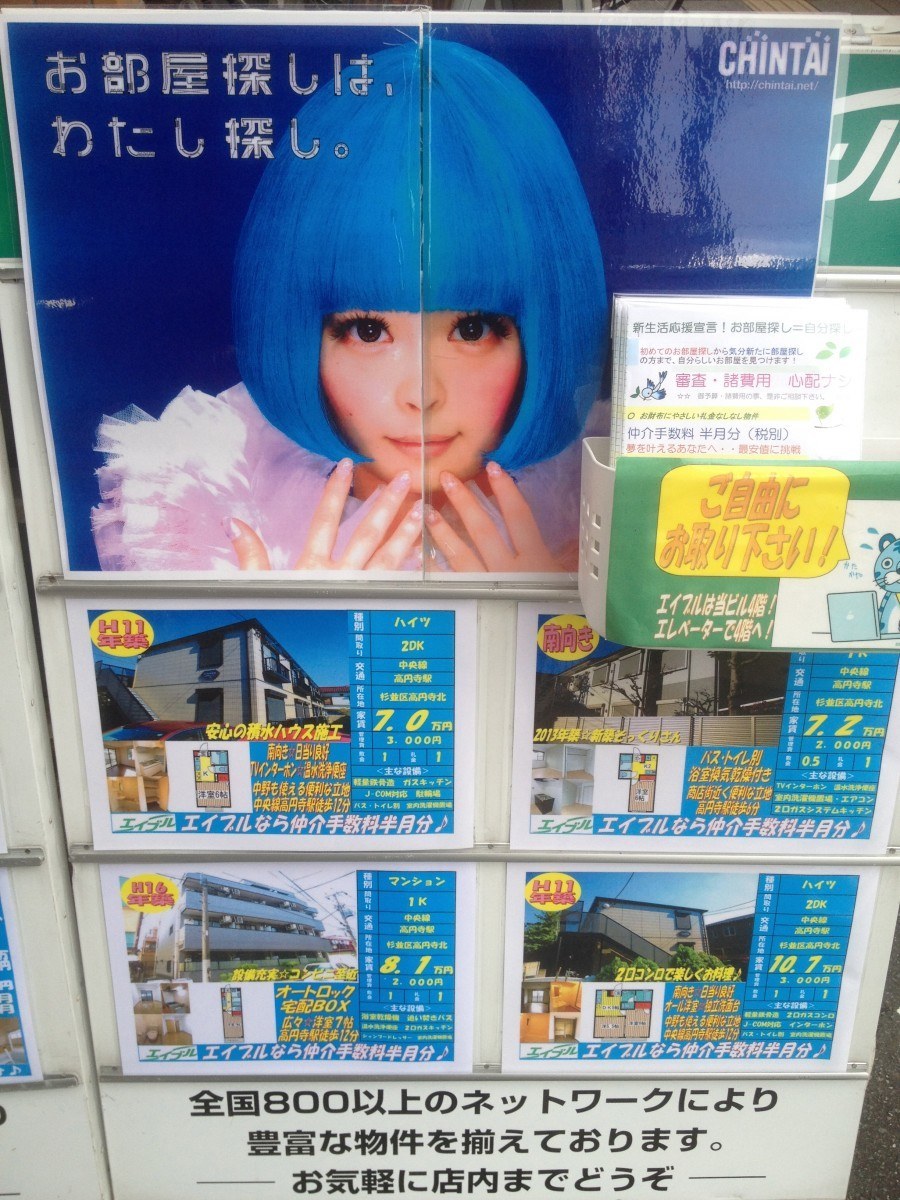Like this post? Help us by sharing it!
After recently seeing the 2 years on my apartment rental agreement come to an end, I had to reengage in activity with my Tokyo Estate Agents– and oh how the memories of 2 years prior came flooding back, when my bank account was completely drained.
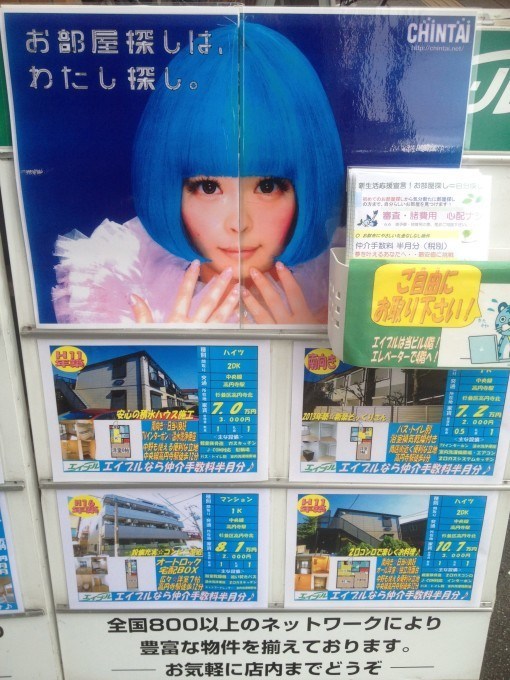
The realities of life in Tokyo – rich or poor, Japanese or expat – is that there is very little space. So, while average rental costs may not exceed other great cities across the world, living space is typically very limited and you end up with very little for your hard-earned yen.
I decided to stay put in my little ferroconcrete den for another 2 years for reasons that may become clearer as you read on…
As in my home country of the UK, (real) estate agents in Japan are not the most popular organisations, and likewise, the image of the money-grabbing landlord holds true for many here in Tokyo, too.
So, you need a roof over your head: first the apartment hunting game. The majority of property owners wishing to rent out to tenants prefer to channel all the contractual and legal wrangling through the estate agents. Hence, pretty much any area of Tokyo will have a wealth of (wealthy) agents around the so-called Ekimae (station front) area.
All display “great deals” in the shop window for what I call “ghost apartments” – ones which have always (coincidently?) just been rented out, when you enquire…
”But what about this one, Sir?” So, you are lured into the shop by the marketing hook and start to trawl through the dozens of rooms on offer.
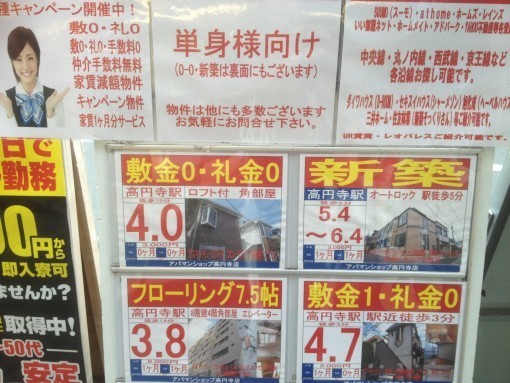
And when I talk of rooms, the Tokyo singleton on an average white-collar salary is often only able to afford the one room – a tiny single room studio apartment. Unlike in London, house sharing is also not an option in Japan’s capital, so your room is where you eat, sleep, watch TV, entertain… At least you have privacy, well, that is if your walls are not paper thin!
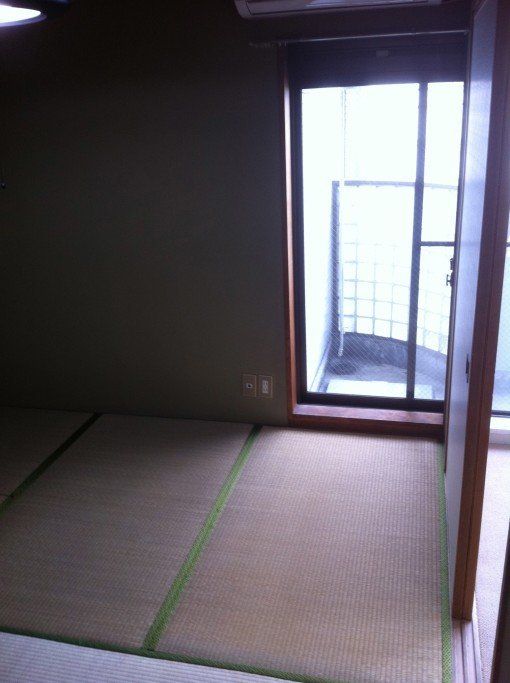
Apartments are very often still measured using the old Japanese system of counting tatami mats. These traditional rush straw mats are, sadly, increasingly giving way to vinyl flooring or timber parquet, however they are still the way to gauge living space.
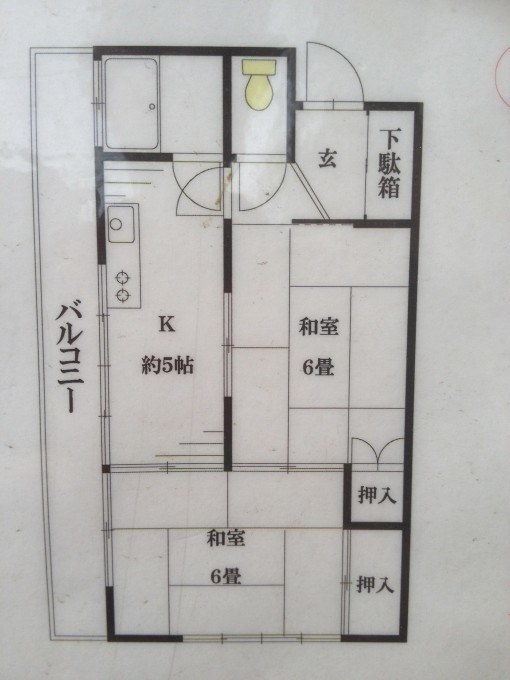
Tokyo tatami mats (a little smaller than their equivalents in western Japan) are 1.76m x 88cm. A typically-sized main room for single occupancy is therefore a mere 6 ”Jo”, i.e. 6 mats, so pretty tight at just under 10 square metres! This one main room will often (but not always) have a small built in wardrobe, and your one source of light – hopefully sliding glass doors which give out onto a little balcony space (perhaps itself the size of a single mat). You certainly need to know where the sun is going to be when choosing – north facing is not a good way to go unless you want to live under artificial lighting whenever you are at home, day or night.
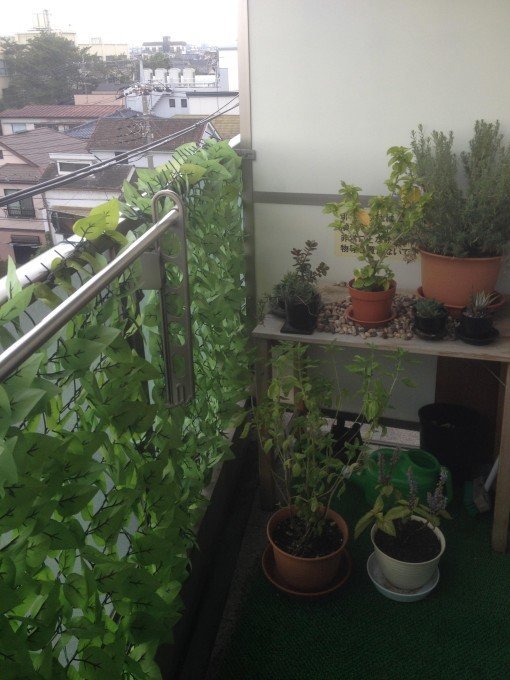
Other areas in the apartment – the genkan; a tiny square area a little lower than the rest of the apartment floor, which has room to park 4 pairs of shoes orderly by the front door; a kitchenette with one or, if you are lucky 2 gas/ electric cooking rings; and a prefab, plastic bathroom where you can literally shower whilst on the toilet. Don’t expect to stretch out in the bath either – Japanese style is box like and deep.
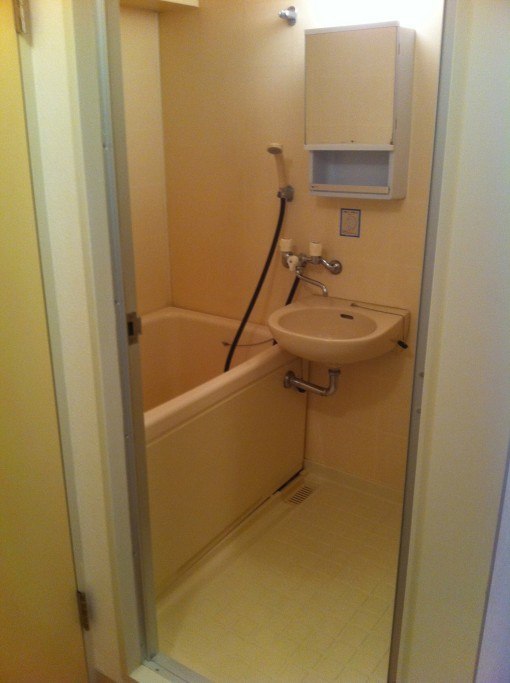
What about heating? Typically a joint AC/heating unit is fixed on the wall, up by the ceiling – great in the summer but as rudimentary physics dictates, warm air rises, so not so perfect on cold winter nights in a country that lives on the floor!
So there you have it – otherwise no fittings, curtains, furniture, bedding, oven, fridge, TV or washing machine, (by the way – you may have to have that on your balcony!) Essentially, a box with little character and questionable insulation.
What other criteria are people looking at closely when apartment hunting? Aspects such as aspect (inevitably) – one worry being that your wonderful view, above the Tokyo cables and poles, may disappear if construction of a neighbouring building starts (some seemingly appear overnight here). You may soon find a towering, shadow-spewing edifice which extinguishes any natural light that you ever had.
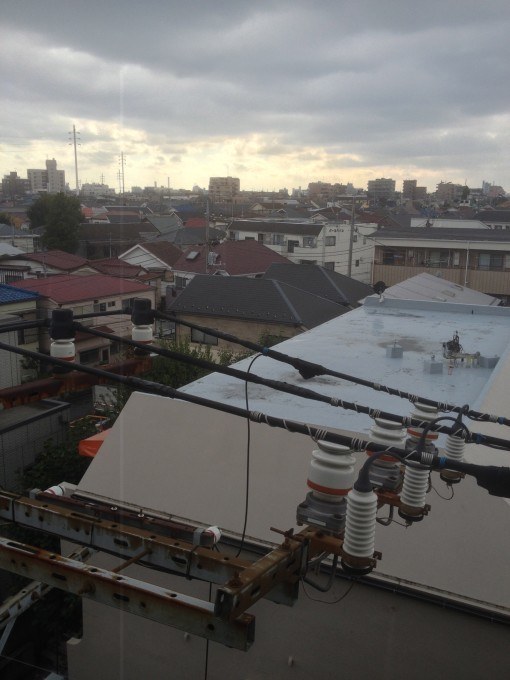
Equally important – how far is the nearest overground or underground railway station on foot? The great majority of the millions of Tokyo commuters use what has to rank as one of the finest public transport systems in the world. Getting to your nearest train station is key in the dash to and from the workplace, and people are keen to reduce the commute in light of long working days. Too close though and your room will be shaking from 5am till past midnight every day of the year!
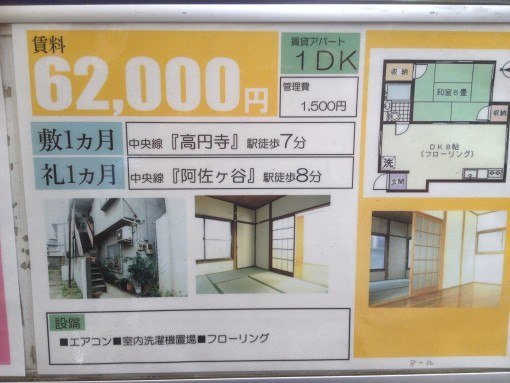
Another consideration – is the building a flimsy walled “apato” (often found in smaller and older apartment blocks)? The better option is modern robust, ferroconcrete “mansion” (a far from a country manor house), which is far better if you don’t want to hear the clicking of your neighbour’s chopsticks as they eat, let alone any nocturnal activity.
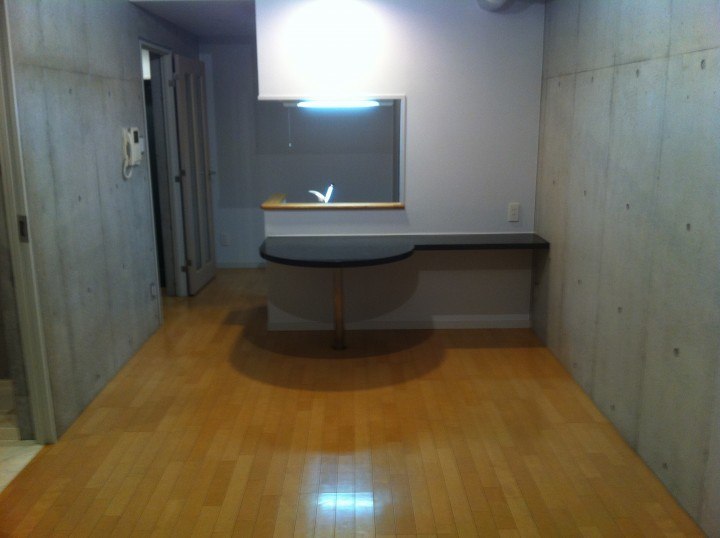
Oh, and of course, there is cost to consider! In Japan, the process does not simply involve a deposit payment, your first month’s rent and you’re set. Other quite substantial costs are incurred depending on the landlord’s decision on how much reikin – (key money) to demand. This often irks the foreign tenant in Japan, as it seems to serve essentially a way of saying “thank you, almighty landlord for allowing me to pay you most of my salary for a dingy box provided with gas water and electricity for the next 2 years”. 2 months’ of deposit is quite common, and this is often non-returnable, no matter how spotless you leave a dwelling on vacating it. A guarantor company may even be required, which essentially covers your missing rent if you decide to make a run for it – another month’s rent. Oh, and of course, there is the friendly agent’s fee – take a month’s worth why don’t you?
So let’s break it down using a tiny apartment example to really emphasize what many single Tokyoites require to secure 6 tatami mat place, an hour by train from the (huge) central Tokyo area. Let’s assume a modest 80,000yen (500 pounds) rent per month. Initial costs to get a contract signed, may work out as expensive as follows:
2 month’s rent upfront
2 month’s deposit
1 month’s reikin (thank you/key money)
1 month to a guarantor company
1 month to the agent
Add in a little change for insurance payments and you are possibly heading towards a figure of 600,000 (around 4000pounds) to be paid in order to get a rental agreement signed. And remember, this is for a box of around 20 square metres, which you can do very little to – no redecorating, no car, no motorbike, maybe even no bicycles (where are you going to park it – on your bed?) no pets, no musical instruments, no life..?
I hasten to add that I have decided to sacrifice a large proportion of my salary to actually have a 2nd room to live in – an excess indeed but living out of hotel rooms for a fair part of the year, my need for more than one unit within which to exist is very important for my sanity. The sacrifice is well worth it and having just paid my friendly agent an extra month’s rent to re-sign the contract for another 2 years, I won’t be moving for a while.
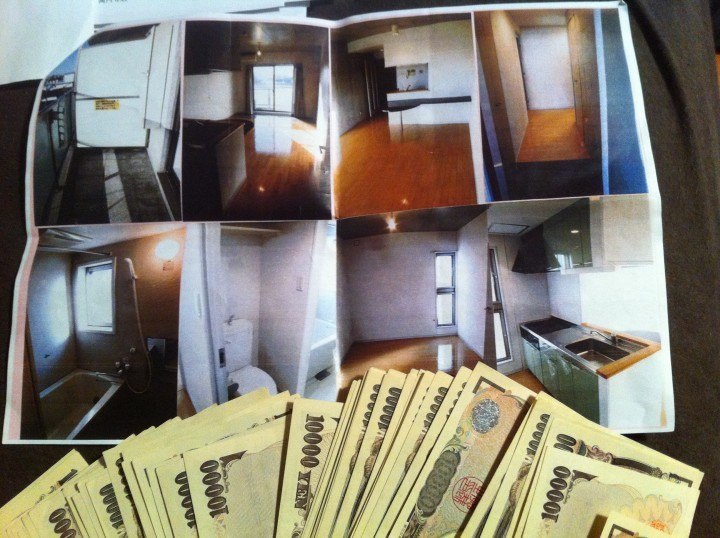
Sacrifices, sacrifices, but of course, I have all the attractions of one of the most bedazzling cities on the planet on my doorstep. That’s another story, but I say, who needs space when you have Tokyo?!


